In light of the recent news that the Palmer House Hotel faces a $338 million foreclosure suit, CHM staff members take a look back at its three iterations.
The Palmer House Hotel was long the pinnacle of grandeur and luxury in Chicago and was for decades the hotel of choice for visiting presidents, dignitaries, and businesspeople. The crown jewel in the holdings of department store mogul turned real-estate developer Potter Palmer, it was a wedding present to his wife, Bertha.
The First Palmer House (1870)
On September 26, 1870, the first Palmer House opened for business at State and Quincy Streets. With 225 rooms, its furnishings alone cost $100,000, or half the construction cost. An additional Palmer House was under construction nearby, but both structures were destroyed by the Great Chicago Fire on October 8, 1871.
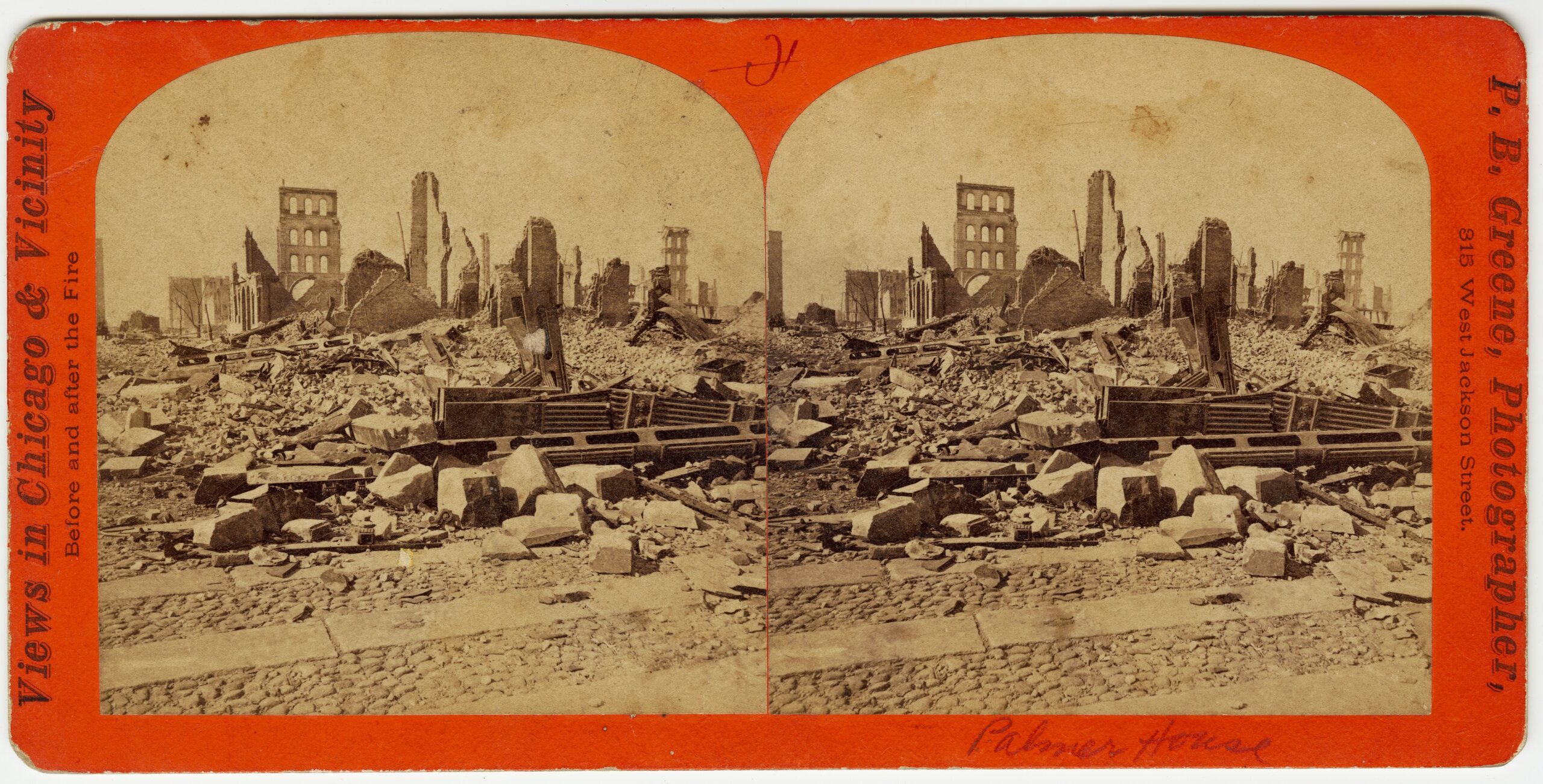
A stereograph of the Palmer House ruins after the Great Chicago Fire of 1871. CHM, ICHi-026749; P. B. Greene, photographer
The Second Palmer House (1873–1923)
Palmer quickly rebuilt on the same site, employing calcium lights so workers could press on through the night. The resulting seven-story, $13 million hotel designed by architect John M. Van Osdel opened on November 8, 1873, marking the start of what became known as the nation’s longest continually operating hotel.
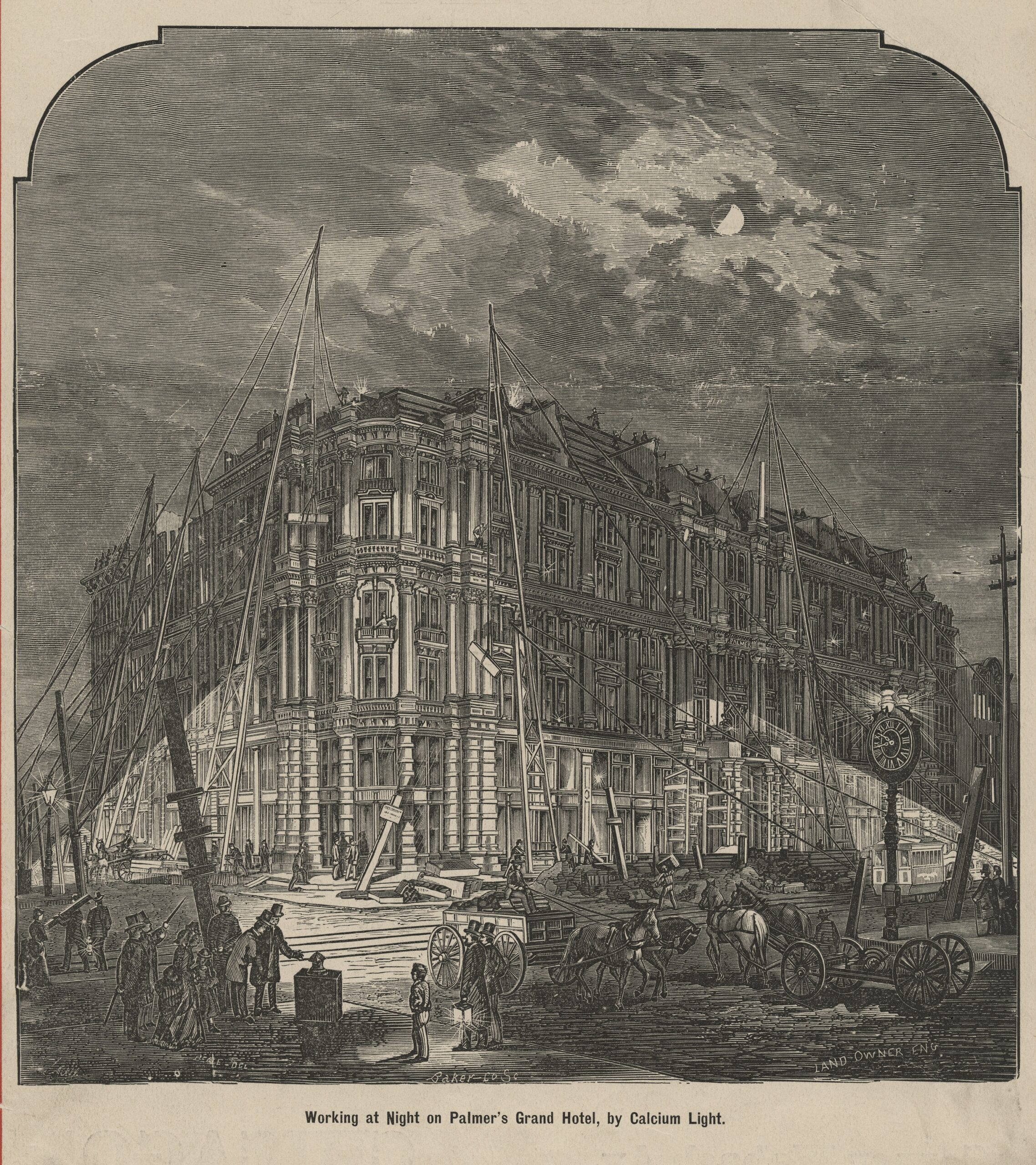
An engraving entitled “Working at Night on Palmer’s Grand Hotel, by Calcium Light,” 1871. CHM, ICHi-002930
The hotel was filled with Italian marble and rare mosaics and was so ornate that it was alternately mocked and praised. Like many Chicago buildings in the late nineteenth century, the Palmer House claimed to be fireproof.
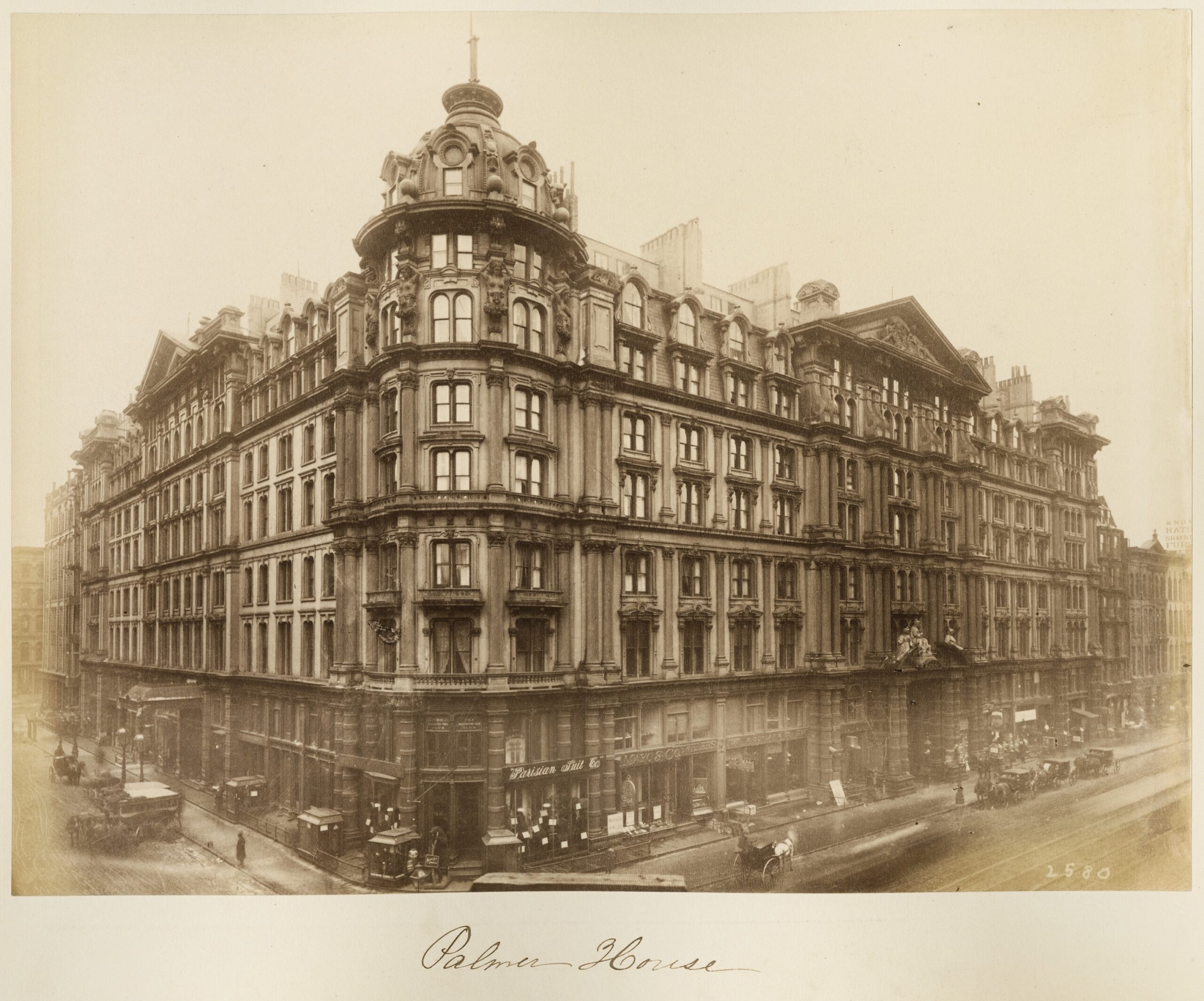
An albumen print of the second Palmer House Hotel, Chicago, c. 1885. CHM, ICHi-069676; J. W. Taylor, photographer
The Palmer House not only served transient visitors but also appealed to wealthy permanent residents who found in the palace hotel a convenient way to set up trouble-free, elegant households.
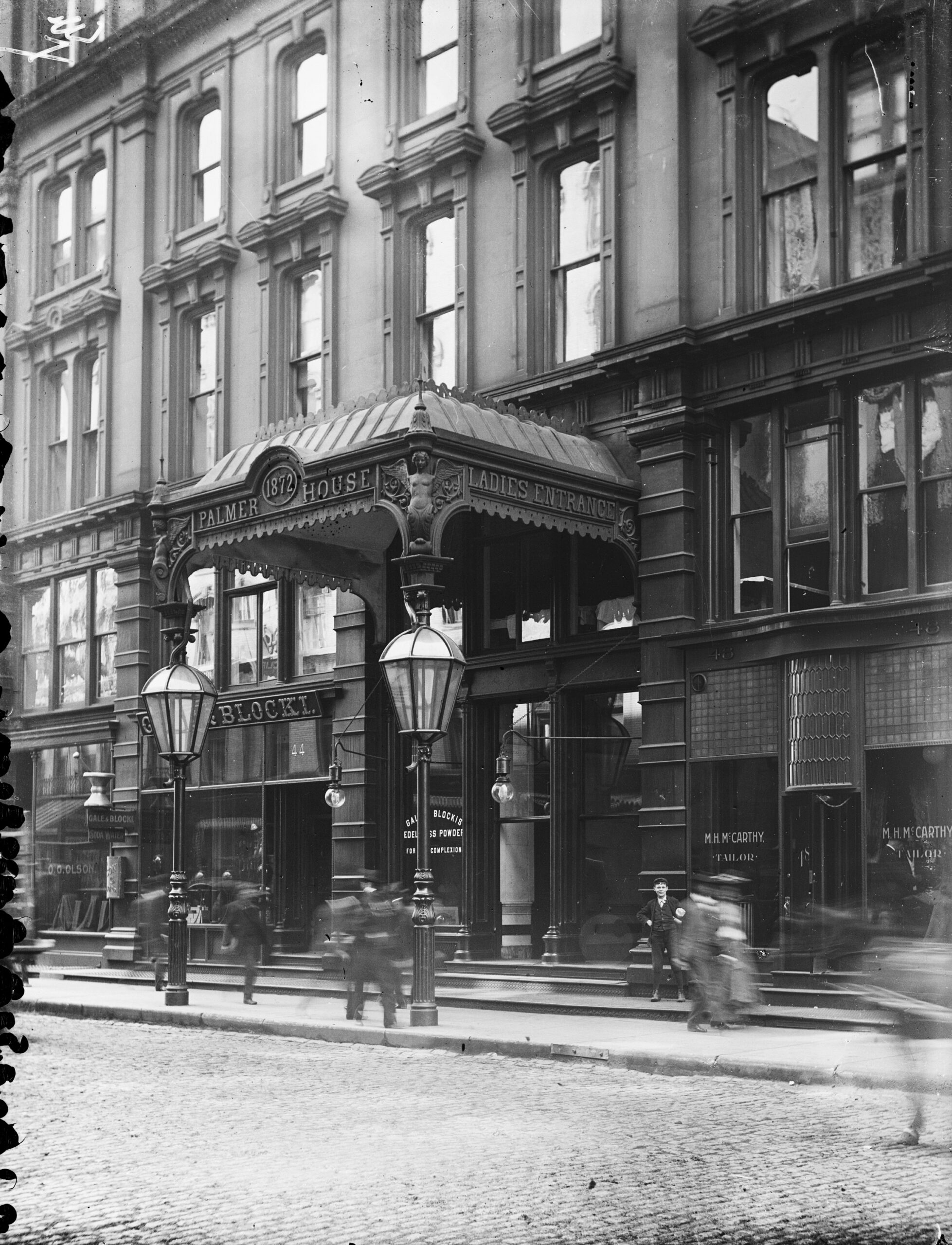
The ladies’ entrance to the Palmer House hotel, which can be seen in the lower left corner of the albumen print, Chicago, September 19, 1903. DN-0001231, Chicago Sun-Times/Chicago Daily News collection, CHM
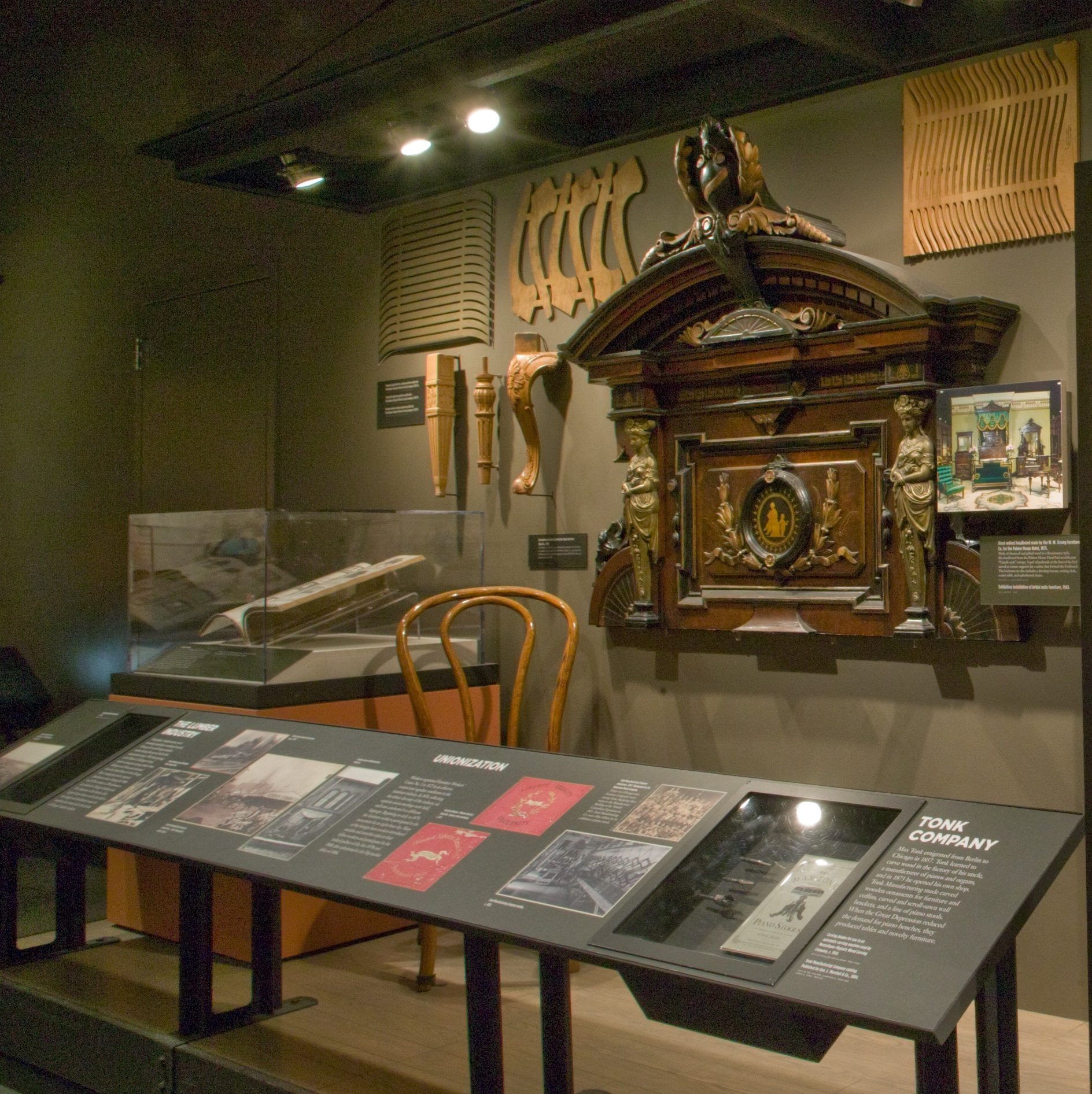
This ornate headboard (1873) on the right was part of a bridal suite in the second Palmer House. Made of ebonized and gilded black walnut in a Renaissance style, the headboard was surmounted by a French-style canopy. It was made by W. W. Strong Furniture Co., Chicago’s premier furniture dealer and manufacturer of the 1870s. You can find it on display in Chicago: Crossroads of America.
The Third Palmer House (1925–present)
The economic boom and population growth of the 1920s and Chicago’s increasing attractiveness as a convention city led to a perceived shortfall in hotel rooms. Thus, the Palmer Estate decided to raze the Palmer House for a new $20 million rendition on the same site. Designed by the firm Holabird & Roche and built during 1923–25, its twenty-five stories housed 2,268 rooms and for a very short time held the record as the world’s largest hotel.
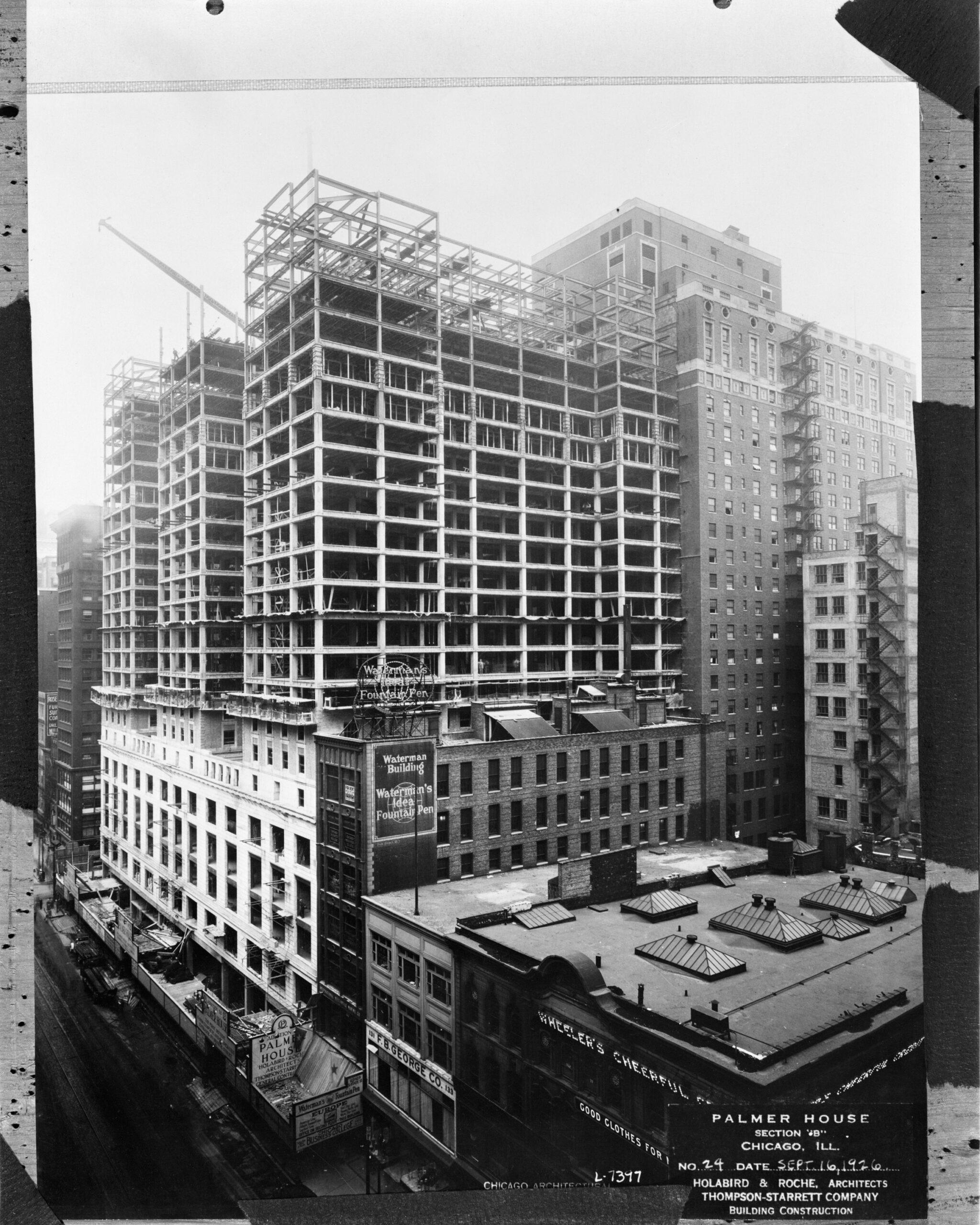
The current Palmer House hotel under construction, 17 East Monroe Street, Chicago, c. 1925. HB-05894-M, CHM, Hedrich-Blessing Collection
As with many luxury hotels, the Palmer House boasted a grand lobby, monumental staircases, bridal suites, dining rooms, ballrooms, a bar, and a barbershop.
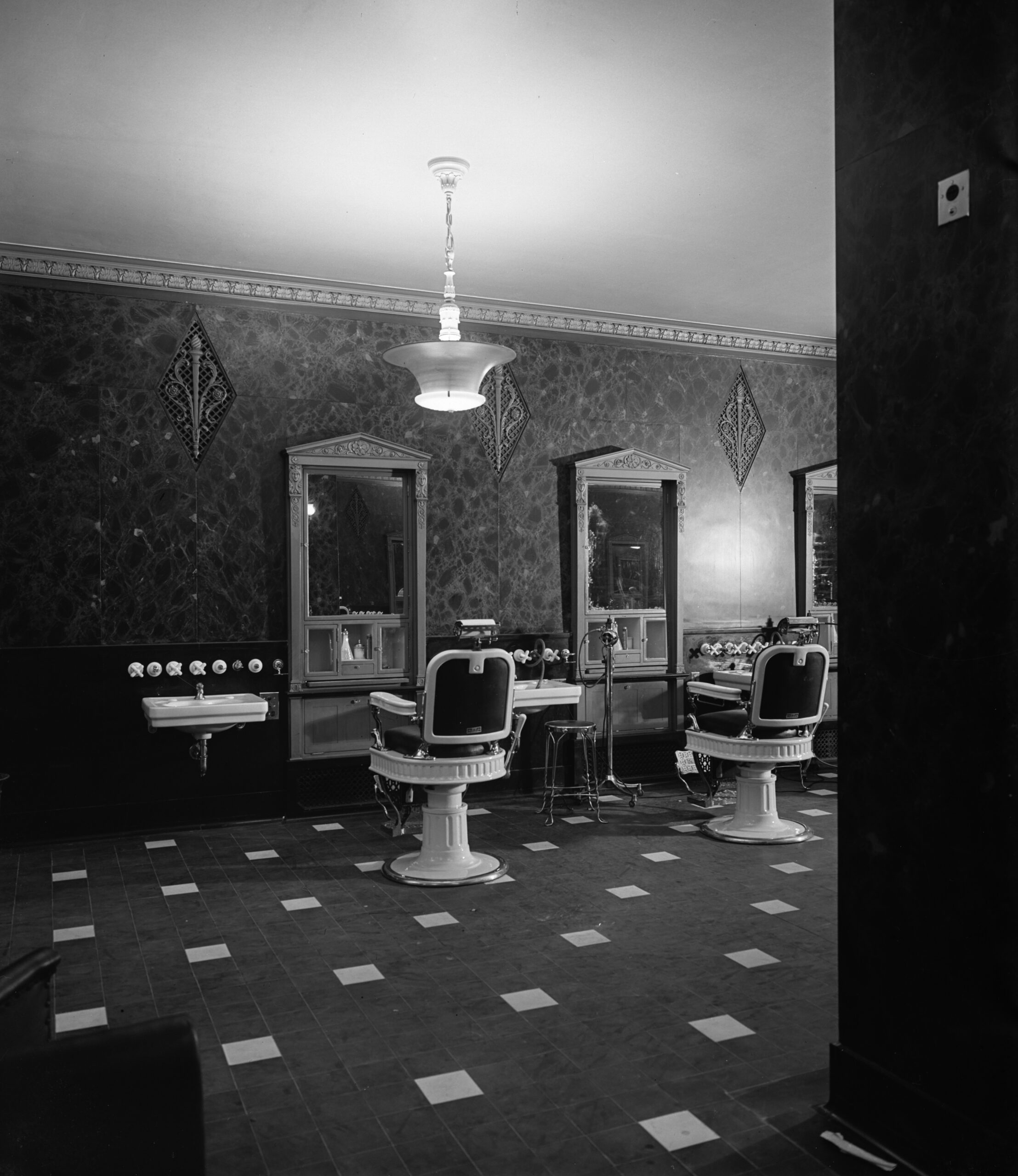
The barbershop at the Palmer House Hotel, Chicago, c. 1930. CHM, ICHi-080559; Raymond W. Trowbridge, photographer
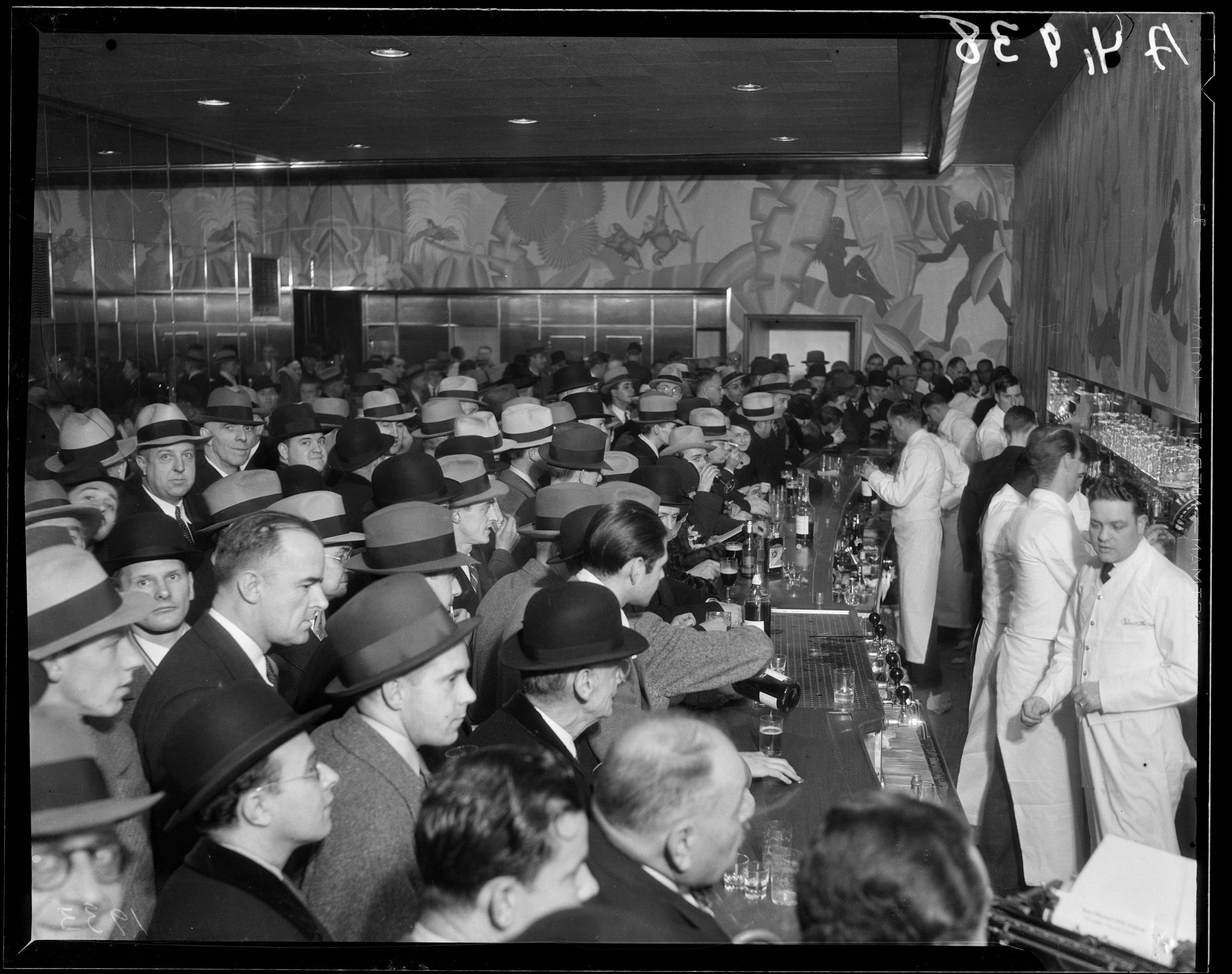
An eager crowd at the Palmer House Bar waits to be served upon the repeal of Prohibition, Chicago, 1934. DN-A-4938, Chicago Sun-Times/Chicago Daily News collection, CHM
In 1933, Palmer House converted its Empire Dining Room into an entertainment venue and supper club. Before air travel was common, Chicago was a popular stopping point for celebrities traveling by train between New York and Los Angeles, and the Palmer House saw its share of big-name entertainers, including Frank Sinatra, Judy Garland, Ella Fitzgerald, Harry Belafonte, Louis Armstrong, and Liberace.
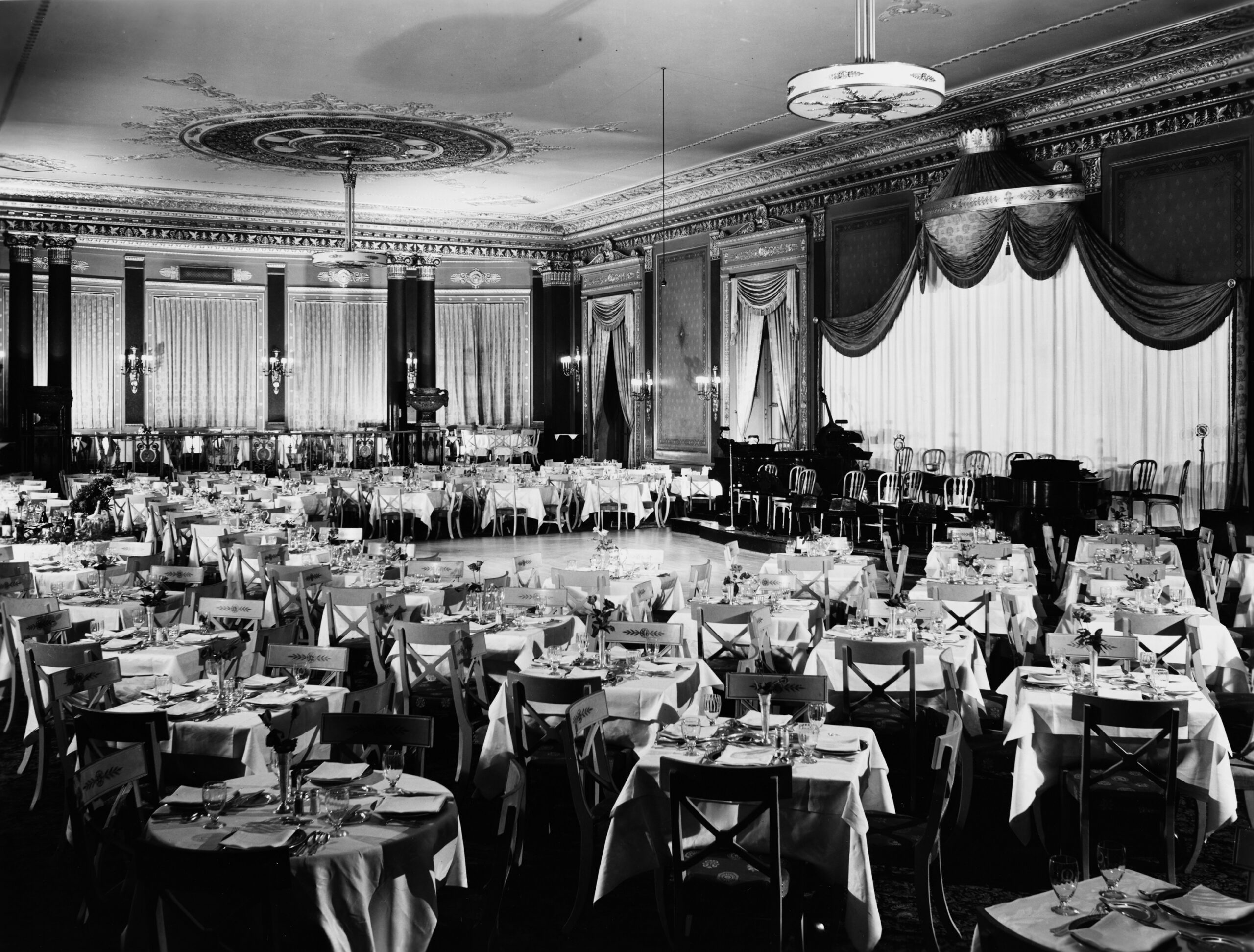
The Empire Room at the Palmer House Hotel, Chicago, c. June 4–8, 1936. HB-03386-C, CHM, Hedrich-Blessing Collection
While its hotel rooms are standard upscale fare, the Palmer House’s palatial lobby, conceived as a European drawing room, remains one of the most magnificent in the world.
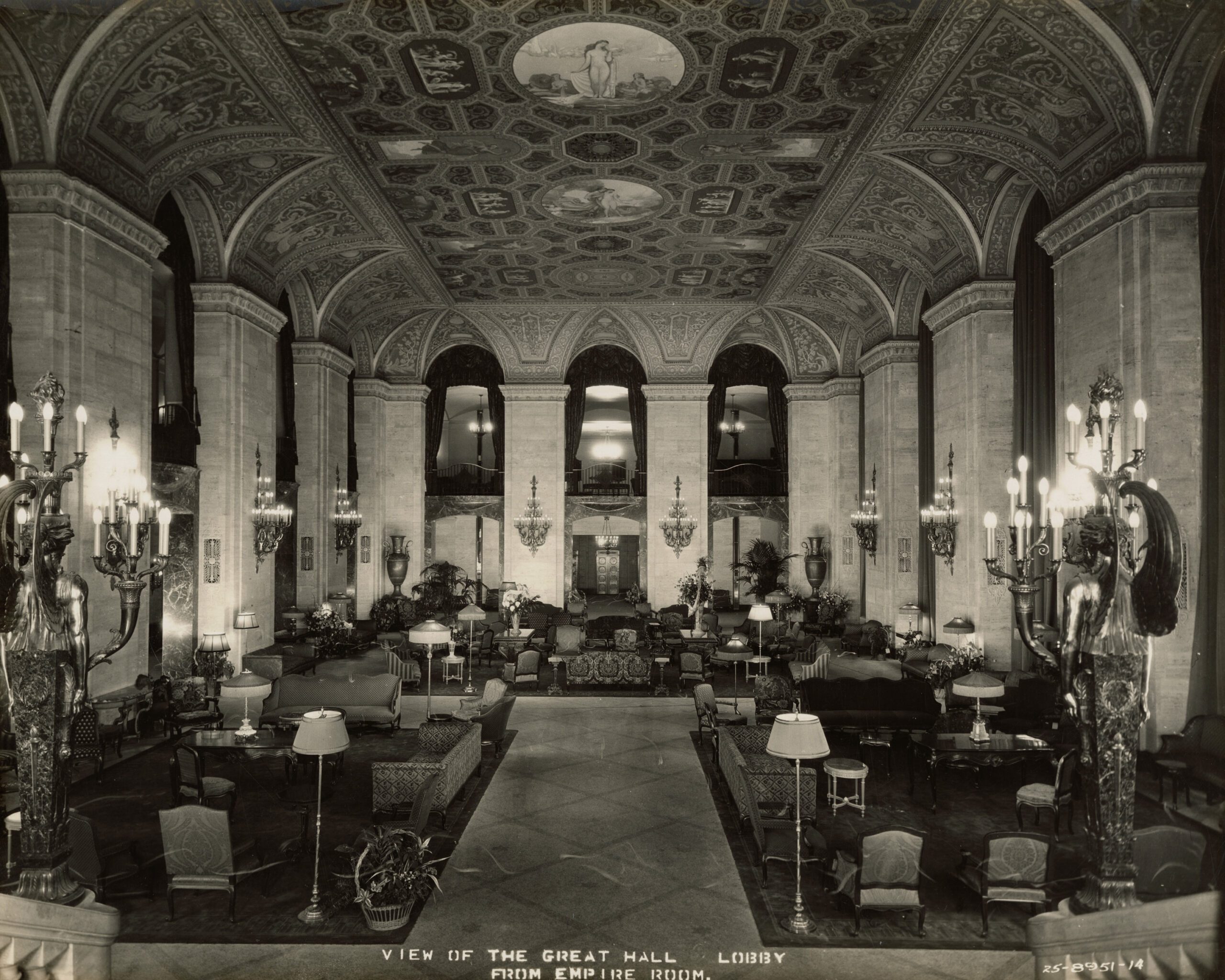
View of the Great Hall Lobby from the Empire Room at the Palmer House, Chicago, 1925. CHM, ICHi-038783
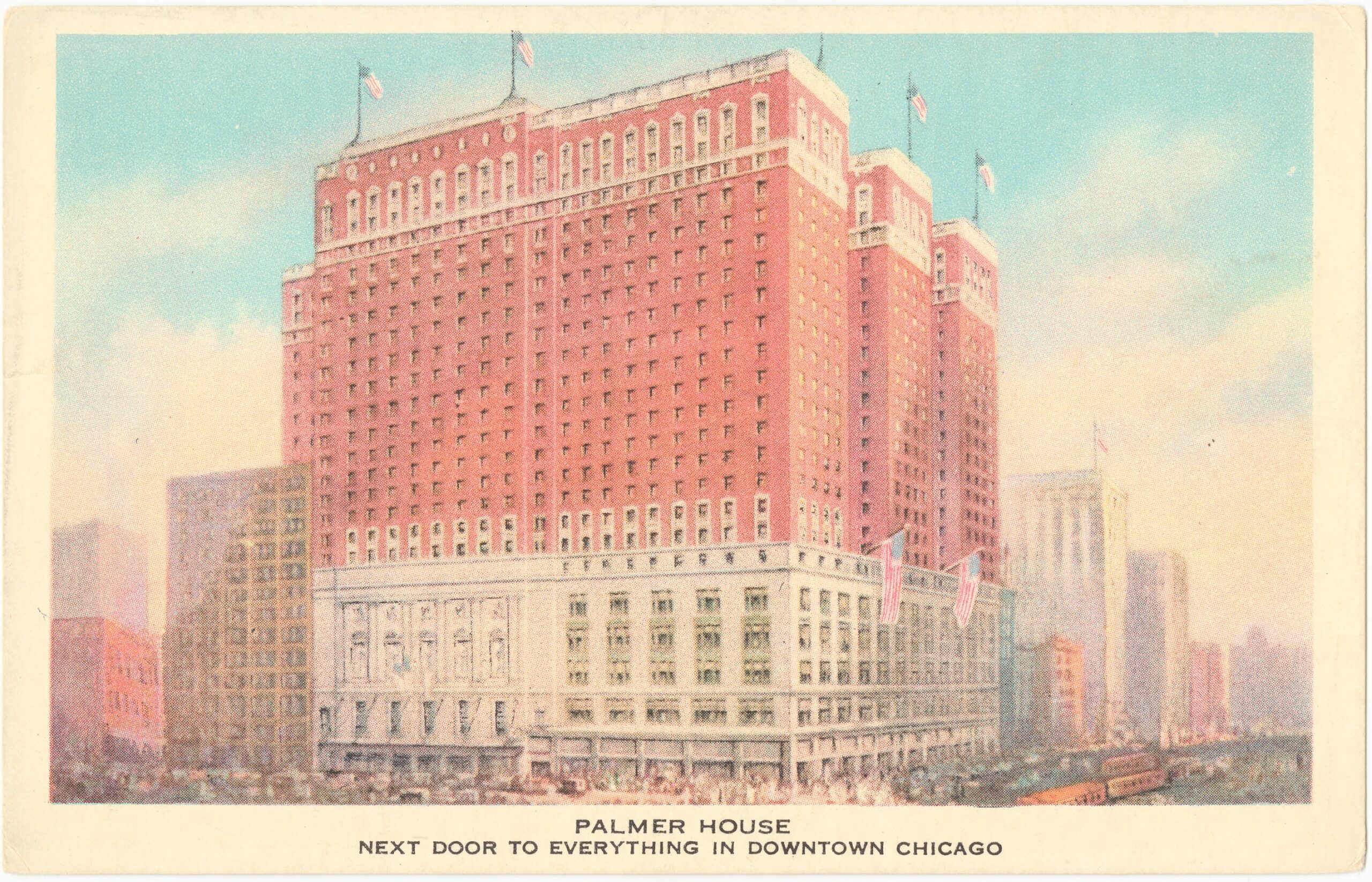
An undated postcard of the third Palmer House Hotel, Chicago. CHM, ICHi-069672
Eclipsed in the 1980s by posh hotels on North Michigan Avenue closer to fine shopping, the Palmer House—a part of the Hilton Hotel chain since 1945—continued to attract guests because of its proximity to the Loop business district, the Art Institute of Chicago, and downtown theaters.
See what people are saying!